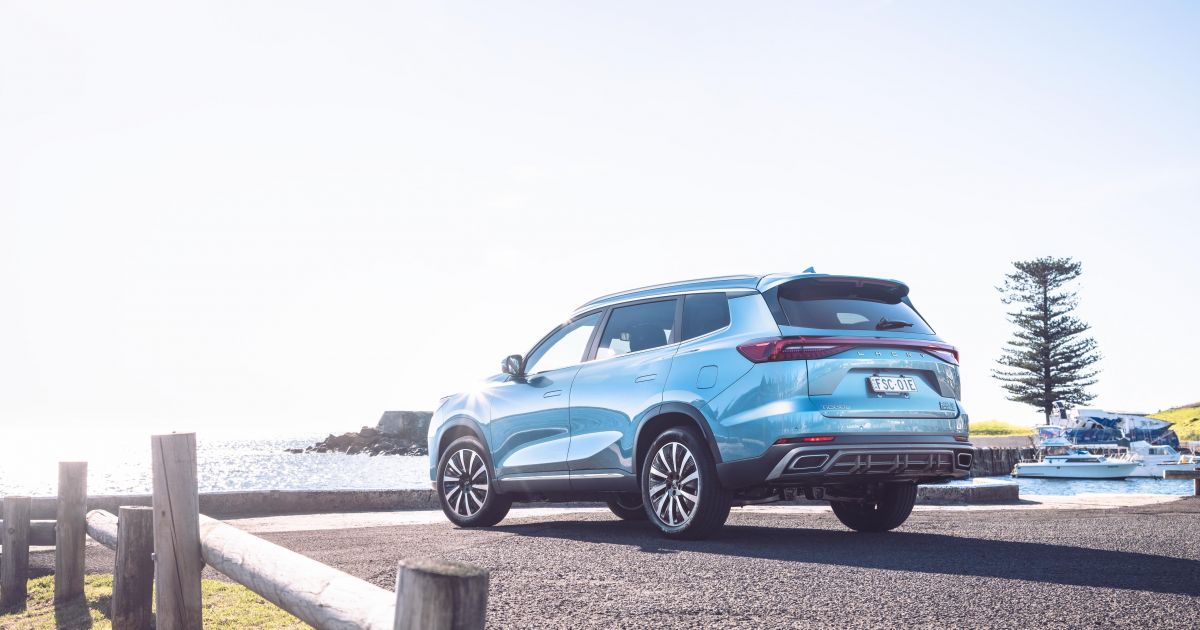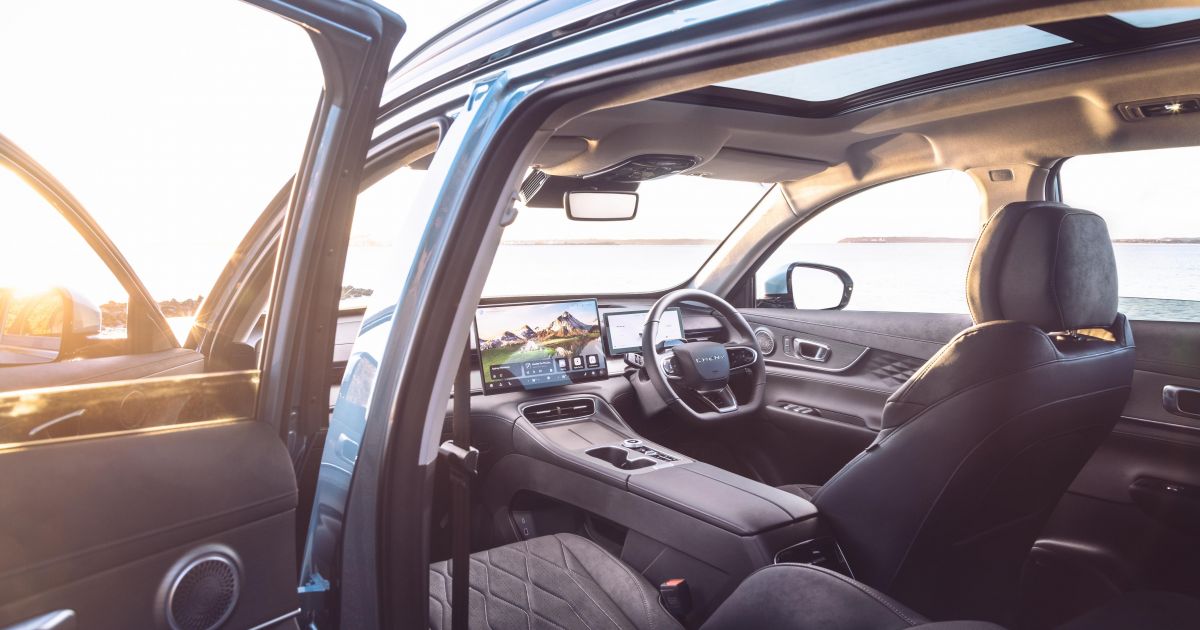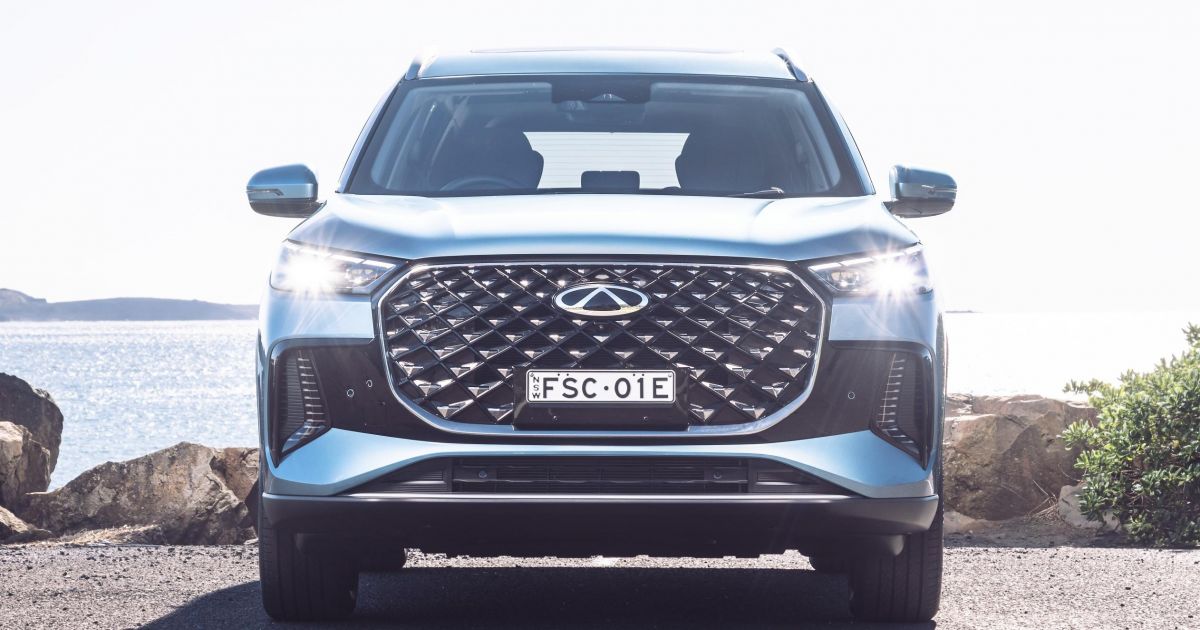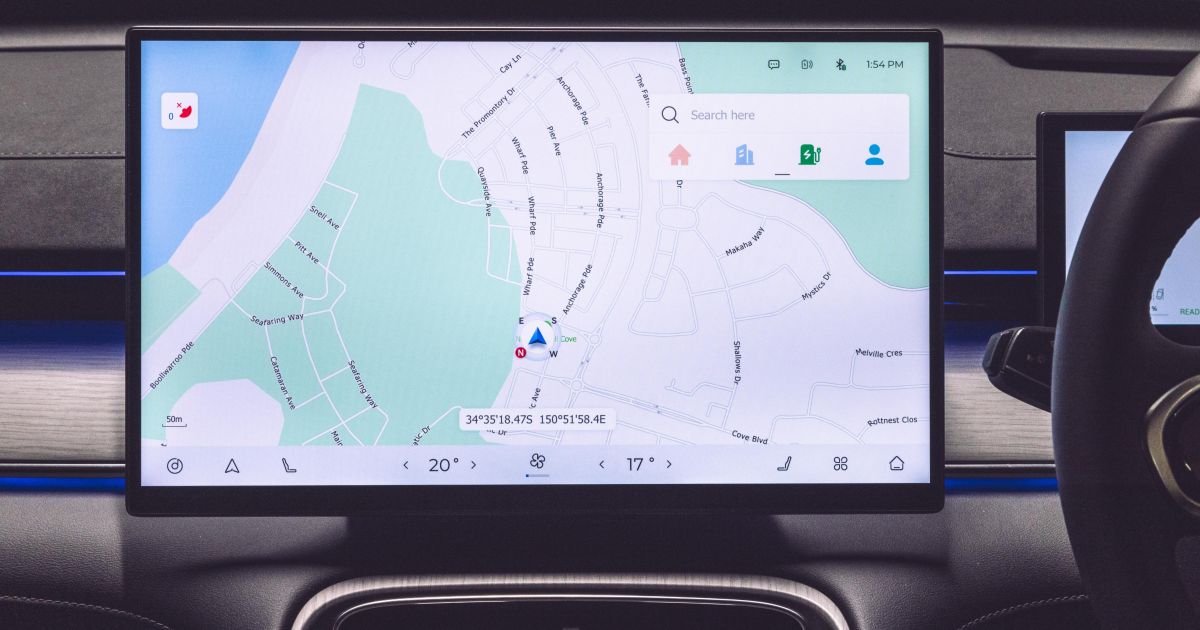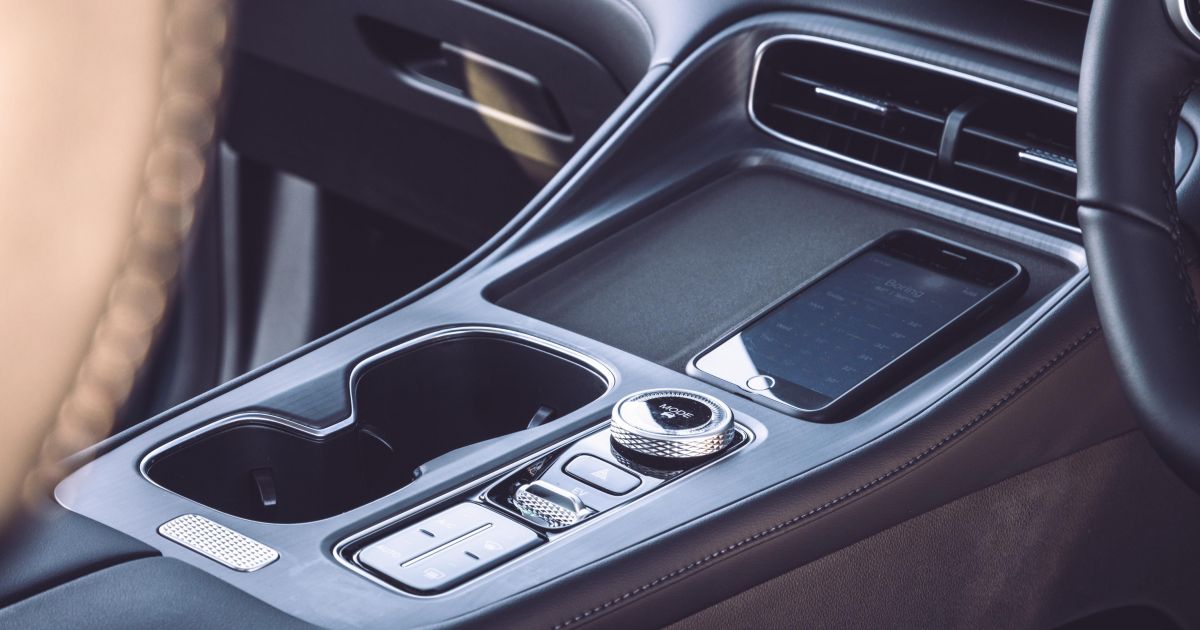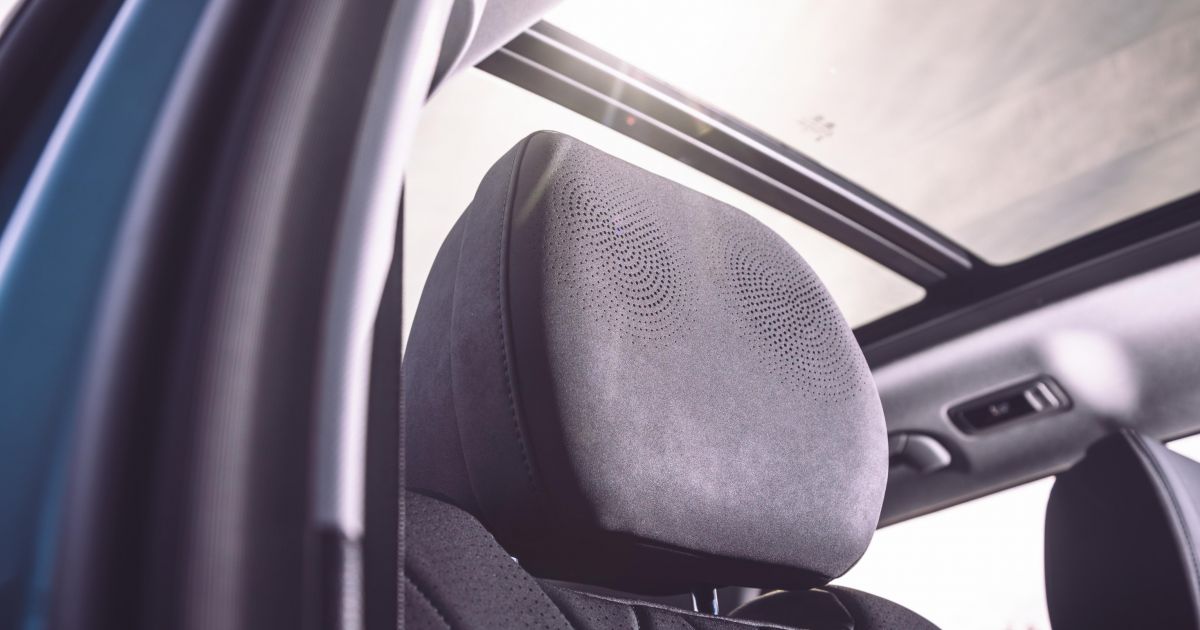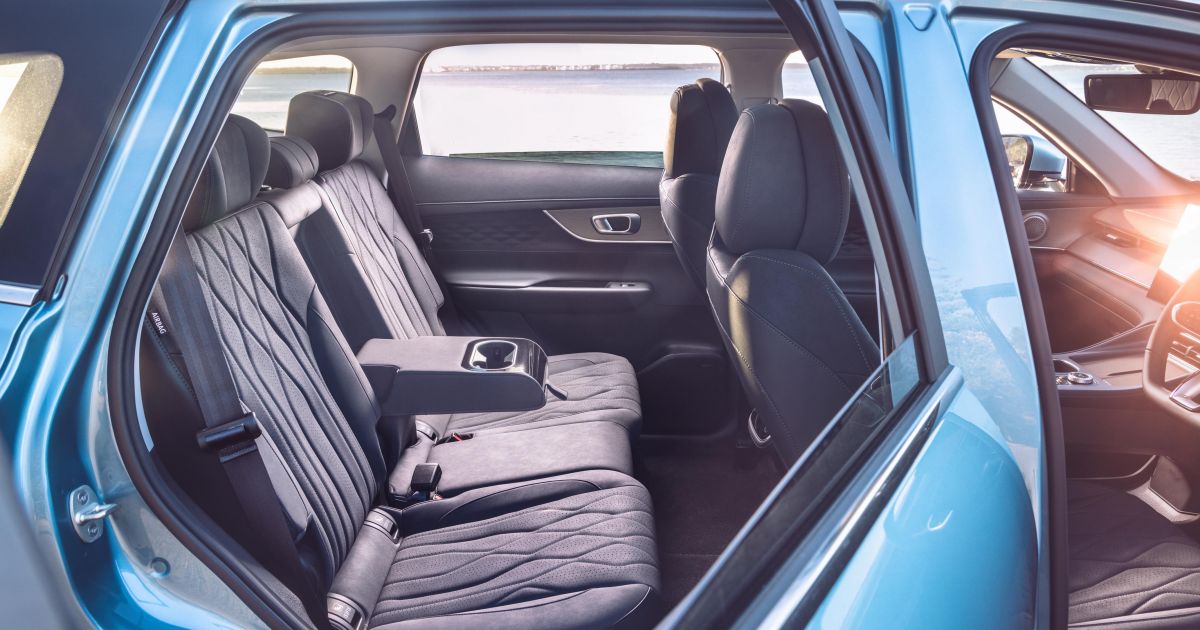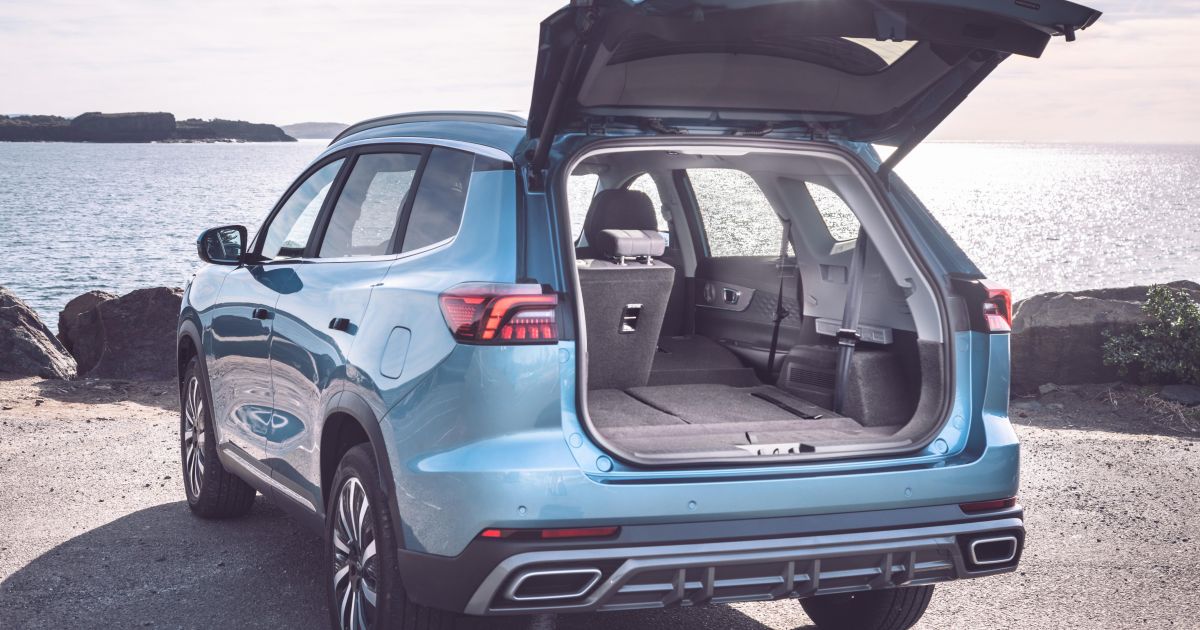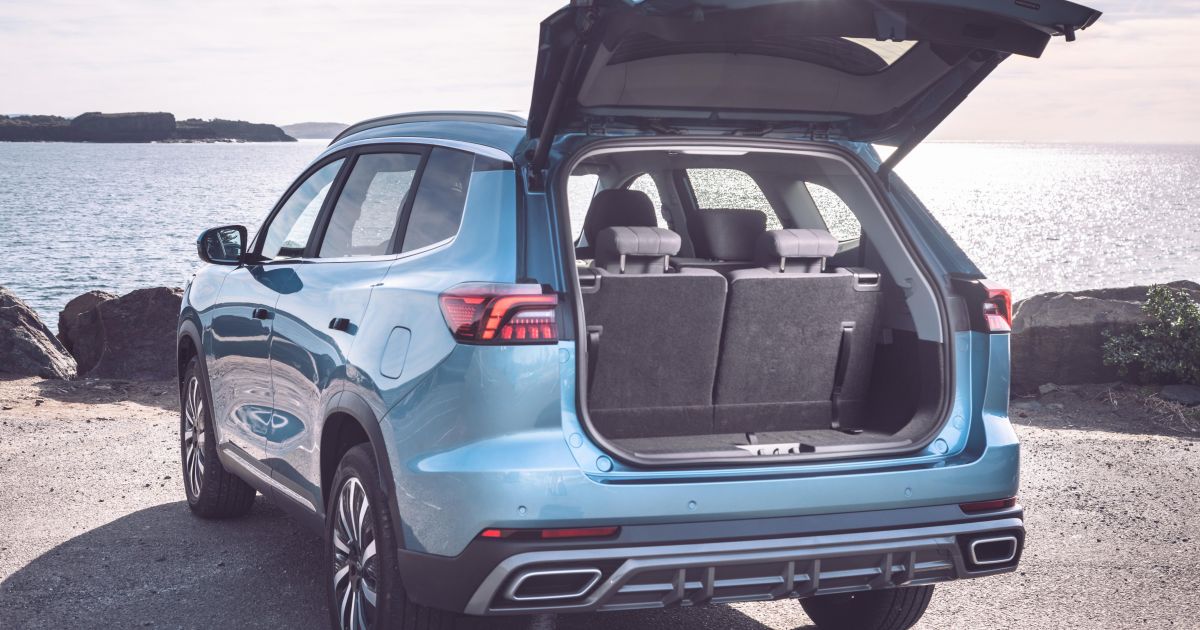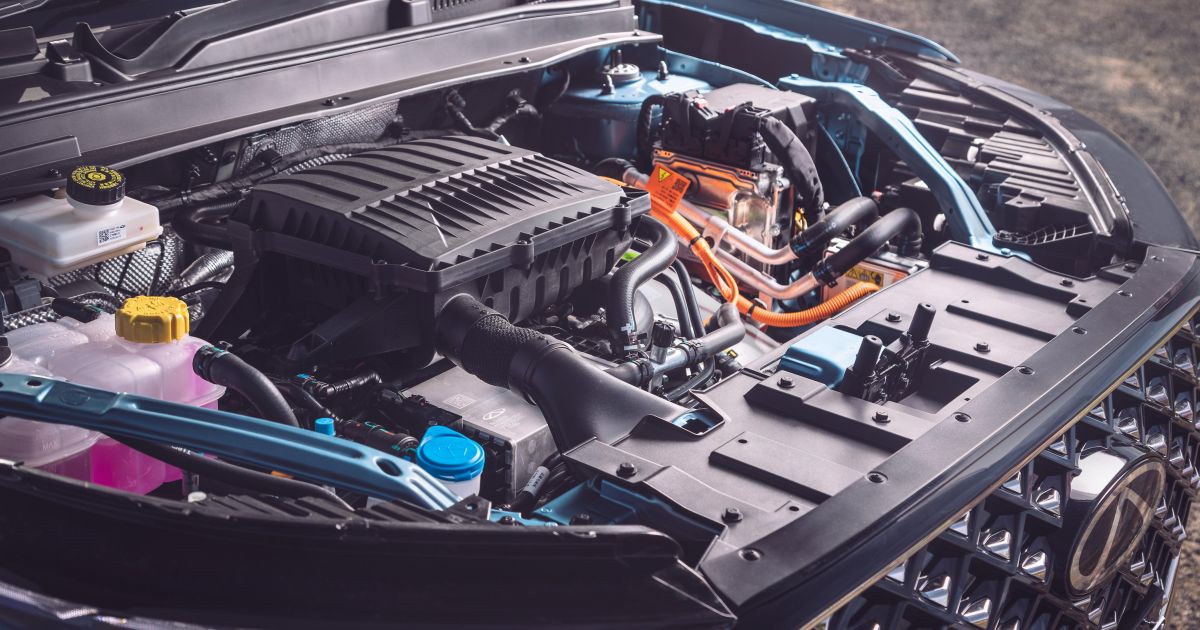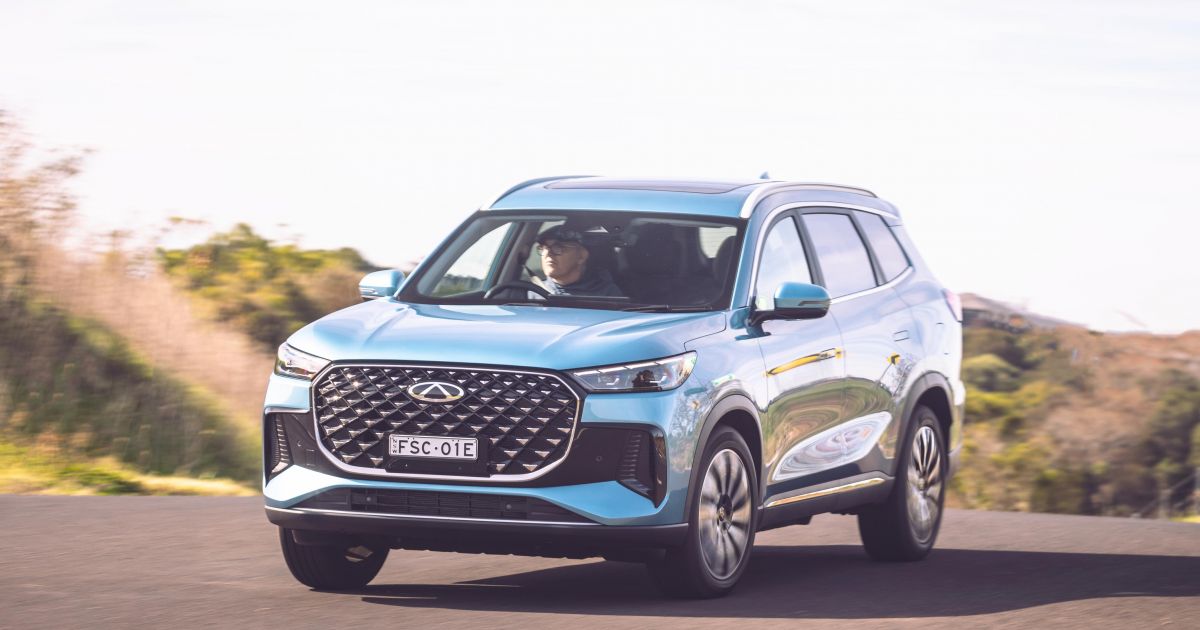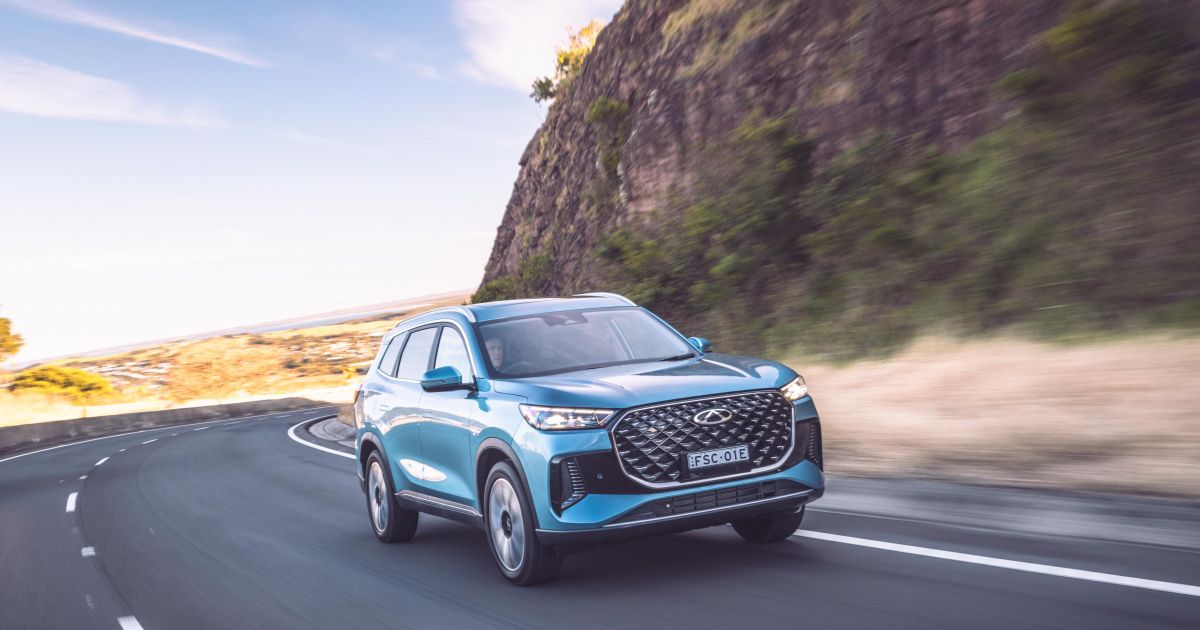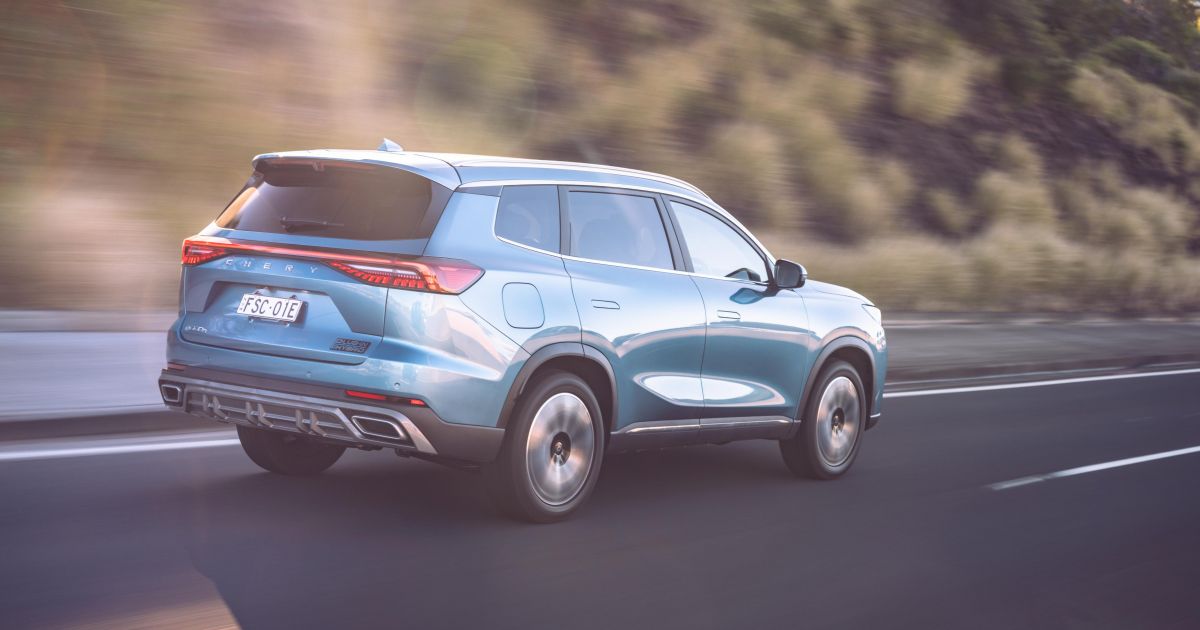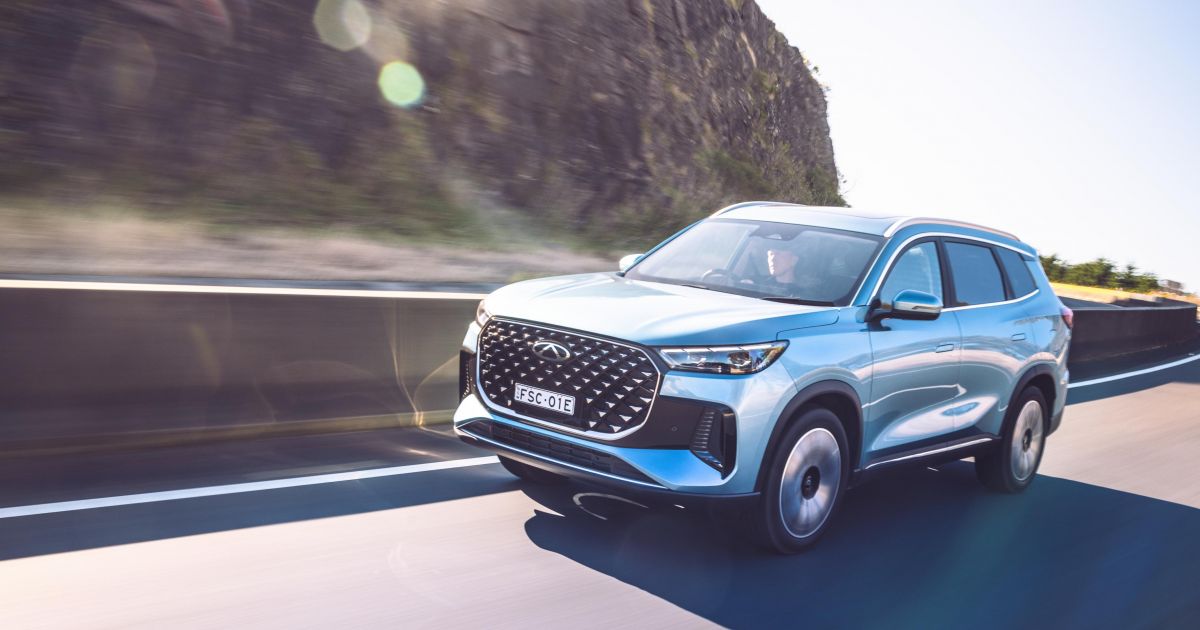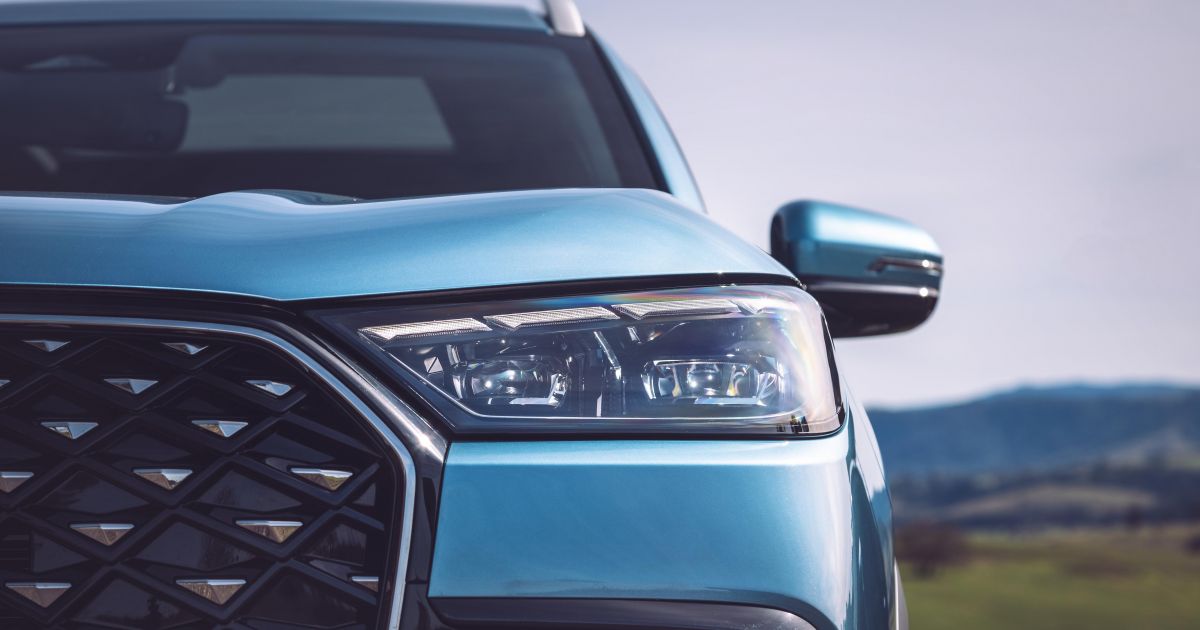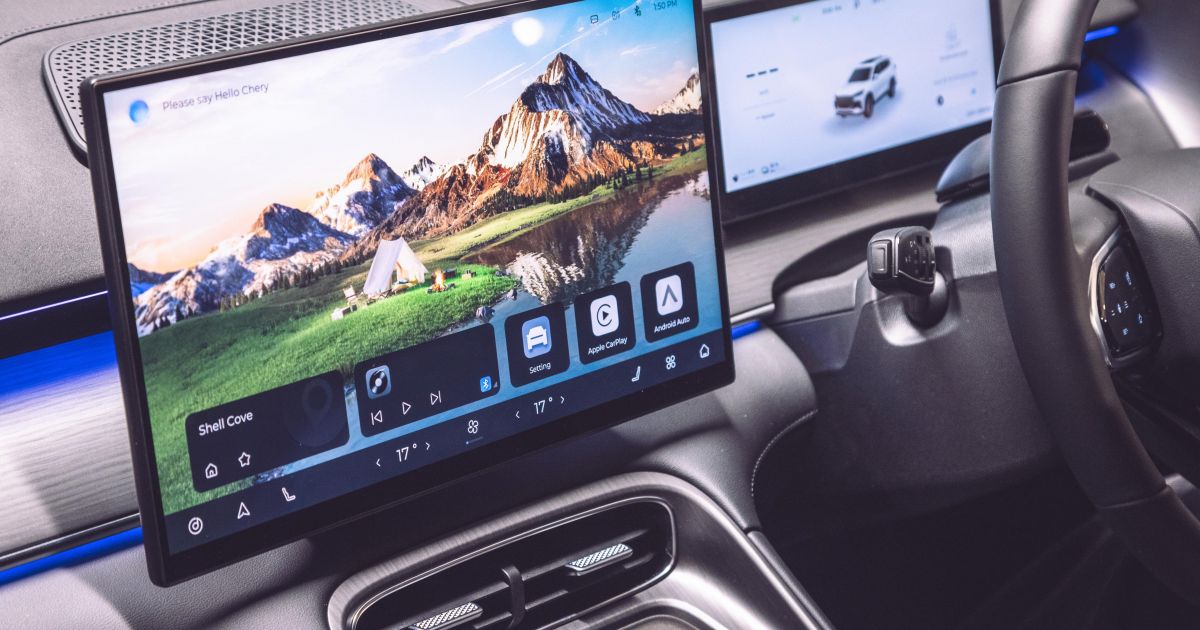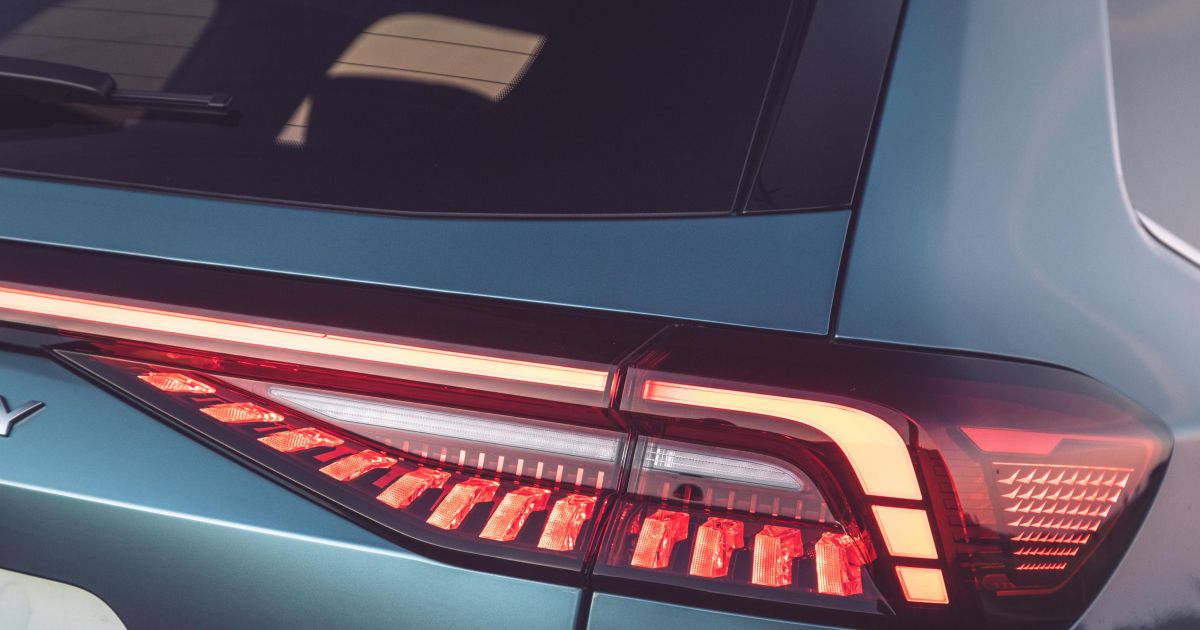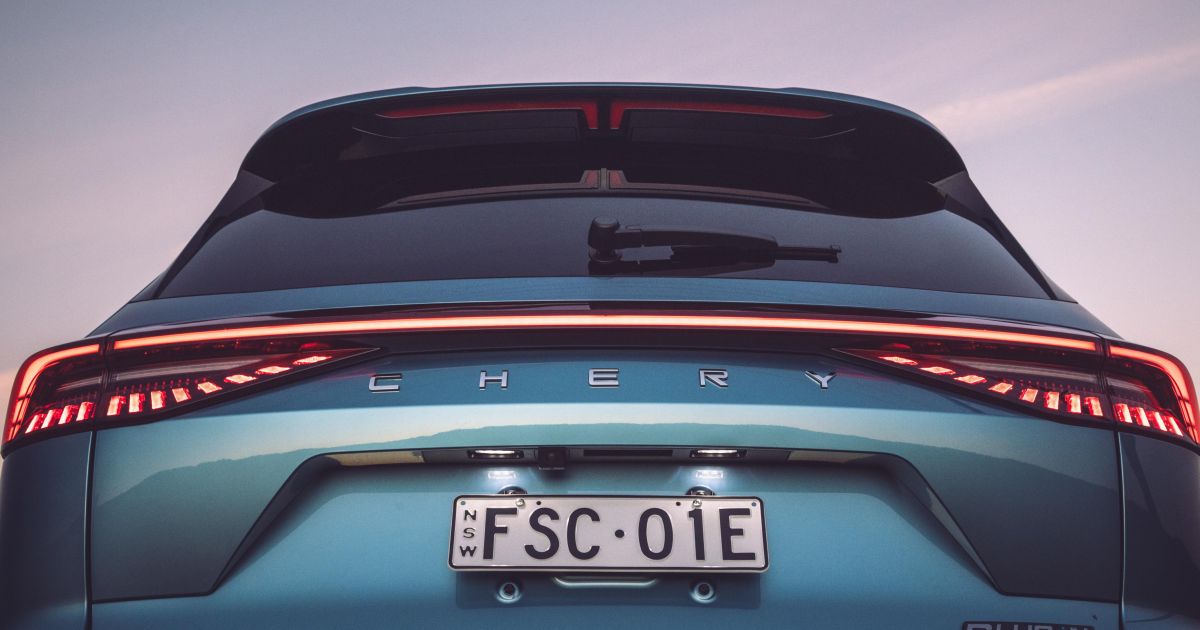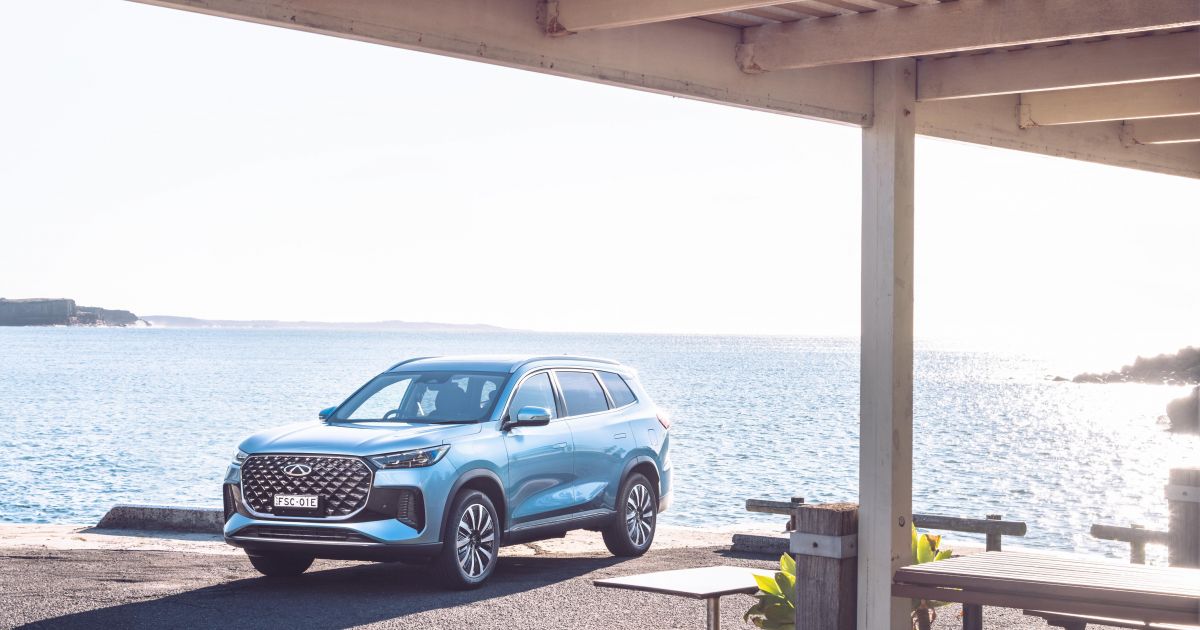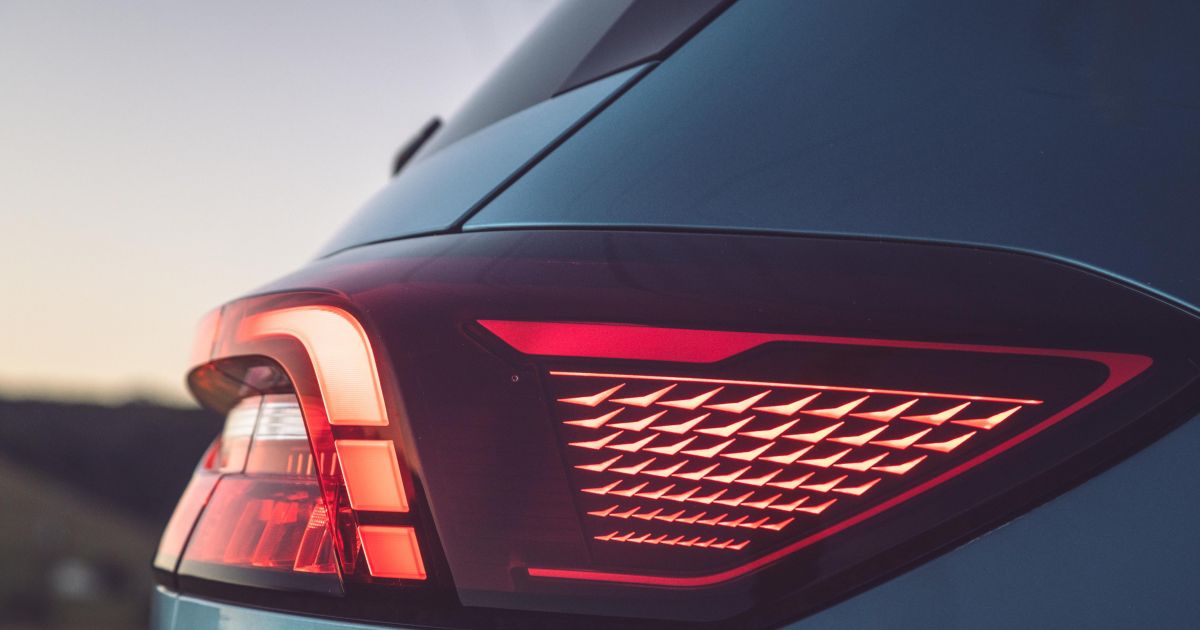You’re looking at the second part of Chery’s two-pronged plug-in hybrid (PHEV) launch strategy in Australia: the new Tiggo 8 Super Hybrid seven-seat SUV.
Under the bonnet, it’s identical to the Tiggo 7 Super Hybrid that’s also now being released. That means it has a 1.5-litre turbocharged four-cylinder petrol engine paired with a transmission-mounted electric motor, fed by an 18.3kWh lithium iron phosphate battery.
This PHEV system is known as Chery Super Hybrid (CSH), and it will soon power more models from the fast-growing Chinese auto brand, with the incoming Tiggo 9 large SUV next up. That gives us a lot to look forward to, because it’s difficult not to be intrigued by the Tiggo 8 Super Hybrid.
The Tiggo 8 CSH is fitted with one of Chery’s newest interiors, headlined by a 15.6-inch touchscreen infotainment display and 10.25-inch digital instrument cluster – a significant upgrade over the petrol-powered Tiggo 8 Pro Max.
It’s sharp and offers plenty of ‘wow’ factor to draw potential buyers in. It also has a new front-end design headlined by a revised grille, making it all the more tidy compared to its purely petrol-powered relative.
Much like the Tiggo 7 CSH, the Tiggo 8 was benchmarked against traditional plugless hybrids from Hyundai and Toyota. This was confirmed to CarExpert by Chery chief engineer David Xianqiang Lu, as the brand intended to make its CSH system feel like a traditional hybrid.
Driving a conventional hybrid is generally smooth and effortless, and so Chery wanted to replicate that powertrain experience with a PHEV that has the benefits of recharging and longer-distance electric-only driving.
Chery invited media to drive both the Tiggo 7 and Tiggo 8 Super Hybrids back-to-back from Sydney to New South Wales’ Hunter Valley, providing us with the opportunity to test them over long-distance routes, rough roads, and several different driving conditions.
Is the Tiggo 8 any more ‘super’ than its powertrain-sharing sibling or its rivals?
How much does the Chery Tiggo 8 cost?
The Tiggo 8 Super Hybrid is $6000 more expensive than the Tiggo 7 Super Hybrid, starting at $45,990 drive-away for the base Urban. Above that is the top-spec Ultimate for $49,990 drive-away.
| Model | Drive-away pricing |
|---|---|
| 2025 Chery Tiggo 8 Super Hybrid Urban | $45,990 |
| 2025 Chery Tiggo 8 Super Hybrid Ultimate | $49,990 |
The gap between petrol and hybrid Tiggo 8 models is not as large as with the Tiggo 7; there’s now a $4000 price difference petrol-only and PHEV variants at base level (instead of $10,000), and just $2000 at top-shelf Ultimate level.
That’s a good thing, because it means the much more complex and more efficient powertrain hasn’t made the Tiggo 8 unattainable. As mentioned, it also makes the Tiggo 8 Super Hybrid by far the most affordable seven-seat PHEV available in Australia. Granted, that’s a niche pool of models, and there are currently only three other options in Australia.
There’s the mid-size Mitsubishi Outlander PHEV starting at $69,290 before on-road costs, and both the larger Mazda CX-80 P50e that starts at $76,245 before on-road costs, and the Kia Sorento PHEV priced at $84,660 before on-roads.
There are also several seven-seat plugless hybrid SUVs on the market, including the mid-size Peugeot 5008 ($55,990 before on-roads), and the large Hyundai Santa Fe ($57,000 before on-roads), Toyota Kluger ($62,410 before on-roads), and GWM Tank 500 ($64,490 drive-away).
To see how the Chery Tiggo 8 stacks up against its rivals, use our comparison tool
What is the Chery Tiggo 8 like on the inside?
This is where the Tiggo 8 Super Hybrid has a clear advantage over all other Chery-badged cars in Australia.
Its screen-heavy cabin may seem derivative, but its organisation and layout make this mid-to-large SUV feel much better thought-out than that.
Headlining the interior is its 15.6-inch touchscreen infotainment system, which – in typical Chery fashion – is where you’ll find and operate almost every key vehicle function. Luckily, therefore, it’s incredibly sharp, with crisp and clean graphics that make it pleasant to look at and use.
There’s a small degree of customisation available, mainly in the backgrounds you can swipe between, plus a series of shortcut widgets permanently open along the bottom of the display. But if you’re like us, you’ll probably spend most of your time using Apple CarPlay.
Fortunately, you have the benefit of a wireless connection when doing so, and the interface takes up the entirety of the enormous screen. There’s still novelty value in seeing CarPlay so large, and we like it.
Climate controls are still locked inside the screen, but there’s an always-on ribbon at the bottom to make them easier to access. This has been seen in other Cherys, including the Tiggo 7, but the functionality here is vastly improved.
You’re finally able to open the climate menu while smartphone mirroring is enabled. Swiping gestures make this easy, and it’s infinitely better than having to navigate back to the car’s native user interface.
Chery’s voice assistant also appears to be pretty clever, which means you can ask it to make adjustments on the fly. There are physical air vents controls too, which saves you from having to drag virtual air flow graphics on the screen like in a Tesla.
There’s still plenty of value in the native system, with full-screen apps like navigation on hand. All considered, this is arguably the best infotainment system we’ve seen in an Australian-delivered Chery to date.
To the right is the 10.25-inch digital instrument display, which appears small in comparison but no less useful. It now sits alone in front of the steering wheel, with the old conjoined panel nowhere to be seen.
Otherwise, it’s a fairly standard screen for Chery. There’s basic information navigable using the ‘buttons’ on the steering wheel, with everything presented in a no-nonsense manner.
The leather-wrapped steering wheel’s buttons are haptic and finished in gloss-black plastic, which means they feel a bit spongy and look second-hand after fingerprints start to pile up. They’re labelled clearly enough, but it’ll still take a moment to get used to how everything works.
The wheel itself is huge and sits at a relatively forward-sloped angle, but the steering column doesn’t extend far enough for my ideal seating position. Shorter fold may need to compromise by sliding the seat further forward, which makes your legs feel cramped for the first few minutes before you acclimatise.
The seats are comfortable and finished in quilted synthetic leather. Heating and ventilation aren’t included in the base Urban variant though, much like the panoramic sunroof or the passenger-seat massage function. Powered driver’s seat adjustment is standard.
Still, the front of the cabin is a pleasant space, and the use of quality materials balances the compromises in terms of ergonomics. It’s simple – everything that looks like leather is soft, and everything that doesn’t, isn’t.
The high window lines and tall centre console ‘bridge’ create a cockpit-like feel. The latter includes a split-lid storage box with soft armrest padding. There’s plenty of space inside, while the open tray underneath is nicely sized for small bags.
You also get a ventilated wireless phone charger, which is exposed to sunlight coming through the windscreen, a pair of cupholders, and a sparse selection of driving-related buttons – many of which are finished in more piano black plastic.
Climbing into the second row is easy, thanks to the large door opening and unintimidating step height. It’s comfortable here too, with the same quilted synthetic leather providing the same premium atmosphere as up front.
This is elevated further in the Ultimate, as the panoramic sunroof makes it feel airy. Not that space is an issue, because the larger dimensions of the Tiggo 8 provides plenty of leg and head room regardless of anyone’s seating position.
The folding and sliding function of these seats – to accommodate third-row access – also provides some adjustment for passengers. A fold-down centre armrest is standard, though the dual cupholders have been slathered in yet more piano black plastic, which won’t stand up to kids with drinks.
If you are carrying small kids, you’ll have two ISOFIX anchors and three top-tether points for child seats. Otherwise, there are two rear-facing air vents for comfort, along with USB-A and USB-C ports for device charging.
Stretching space isn’t generous in the third row though, which is expectedly cramped. It isn’t easy to climb into either, as even with the second row pushed as far forward as possible, it’s still a fair hike to vault yourself over the wheel-arch.
At 173cm, I could fit snugly into the rearmost seats, albeit with my knees touching the seat in front. It’s all par for the course for a relatively small seven-seater, but it means the very back seats are best for kids or very short trips.
The boot also disappears with the third-row seats in place. They fold flat into the floor, providing ample cargo space once you’ve dragged items over the high opening lip. However, there’s no spare tyre; instead a tyre repair kit is standard.
Chery hasn’t quoted boot capacities for the Tiggo 8 Super Hybrid, but petrol versions offer 117 litres in seven-seat mode, and 479L with the third row stowed (also to the top of the seats). For context, a seven-seat Outlander Aspire petrol offers 163L and 478L respectively.
| Dimensions | Chery Tiggo 8 Super Hybrid |
|---|---|
| Length | 4724mm |
| Width | 1865mm |
| Height | 1718mm |
| Wheelbase | 2694mm |
To see how the Chery Tiggo 8 stacks up against its rivals, use our comparison tool
What’s under the bonnet?
Chery’s Super Hybrid system comprises a 1.5-litre four-cylinder turbo-petrol engine producing 105kW of power and 215Nm of torque. It’s paired with a Dedicated Hybrid Transmission, which incorporates a 150kW/310Nm electric motor, though combined outputs aren’t quoted – all of which is identical to the smaller, five-seat Tiggo 7 Super Hybrid.
| Specifications | Chery Tiggo 8 Super Hybrid |
|---|---|
| Engine | 1.5L 4cyl turbo-petrol |
| Engine outputs | 105kW/215Nm |
| Electric motor outputs | 150kW/310Nm |
| System outputs | – |
| Battery | 18.3kWh LFP |
| Transmission | Dedicated Hybrid Transmission (CVT) |
| Drive type | Front-wheel drive |
| Tare mass | 1884kg |
| Fuel economy (claimed) | 1.3L/100km |
| Energy consumption (claimed) | 15.4kWh/100km |
| Electric driving range (PHEV, NEDC) | 95km |
| Fuel tank capacity | 60L |
| Fuel requirement | 95-octane premium unleaded |
| CO2 emissions | 30g/km |
| Max. DC charging speed | 40kW (20 minutes 30-80 per cent) |
| Unbraked tow capacity | 750kg |
We didn’t get enough time in any one car to record a representative real-world fuel economy figure. Even so, and much like the Tiggo 7 Super Hybrid, we did see numbers hovering around the 5.8L/100km mark after a couple of hundred kilometres on the road.
That may sound a bit high, but Chery says 6.0L/100km was a realistic figure for the car in the conditions we drove. Curiously, the official combined fuel consumption claim is 0.1L/100km lower than the Tiggo 7’s, while its energy consumption is 0.9kWh/100km better, and its claimed NEDC electric range is 2km longer – despite being around 100kg heavier and utilising the same powertrain.
These small gains are somewhat undermined by the Tiggo 8’s requirement of 95-octane premium petrol. The Tiggo 7 only needs 91-octane regular unleaded despite using an identical powertrain. Beyond speculating about mitigating the weight gain, the reason for this isn’t apparent – we were told it’s simply a requirement by Chery’s engineers.
As for energy consumption, we saw figures close to 0kWh/100km, or even lower (yes, we saw a number as low as -1.1kWh/100km), when the battery was low and energy regeneration was strong and therefore more power was being produced than consumed. And at full charge, we got within 15km of Chery’s electric range claim.
To see how the Chery Tiggo 8 stacks up against its rivals, use our comparison tool
How does the Chery Tiggo 8 drive?
Despite sharing its platform with the Tiggo 7, the Tiggo 8 is noticeably better to drive.
You may not get the chance to drive the two cars back-to-back on the same roads as part of your car-buying journey (nor want to, given they’re aimed at different buyers), but doing so exposes the comparative strengths of the Tiggo 8.
Putting drivetrains aside for now, we were thoroughly impressed with this car’s ride quality. The key drawcard here, and perhaps marking a return to form for a Chinese brand, is how supple and plush it feels when speeds pick up.
It’s not the car’s ability to iron out minor imperfections, which it doesn’t do with any real aplomb. Instead, the Tiggo 8 does an excellent job of ironing out the kind of larger bumps, depressions and undulations you’ll find on regional roads around Australia.
It makes for a very comfortable ride, and the compliant suspension setup means the Tiggo 8 is great for longer freeway stints. You just don’t feel tired after spending a few hours behind the wheel.
We suspect its cushiony ride is a result of the increase in sprung weight compared to its powertrain-sharing sibling. Either way, the composed ride doesn’t come at the expense of stability of road holding; it takes a fair hit to throw occupants around or unsettle the car.
Supporting its easy freeway cruising is a well-calibrated suite of driver-assist gear, echoing the Tiggo 7. Chery says it has put a lot of work into improving this aspect of its cars, and our positive experiences in both of its two newest offerings lend credence to its claims.
The Tiggo 8 CSH can confidently keep itself in line with freeway traffic using adaptive cruise control, and it has no problem following bends in the road. Even with the radar cruise deactivated, you won’t have significant issues with its passive lane-keeping function unless you’re genuinely about to cross a lane marking.
It’ll resist by steering back into your lane, but release when you turn on the indicator, as it should. Similarly, its blind-spot monitoring system is competent and reliable. And while it has speed limit recognition, its audible overspeed warning is muted by default.
The only slight hold-up is the driver monitoring system, but even then it’s nowhere near as bad as you may expect. Most of the time it’s quiet, but it will pipe up if you spend a second too long looking at the infotainment display or your side mirrors.
This can at least be deactivated by pressing a button in the car’s settings menu. Unfortunately, you’ll probably spend a bit of time looking at the screen anyway, as it’s strangely tricky to adjust the level of regenerative braking.
You can’t do it while moving, at least not as far as we could figure out. It’s possible to adjust it when stopped, but it’s still needlessly complicated – a simple button or shortcut on the car’s home screen would sort this out in a heartbeat.
Further, the car’s brake pedal feels a bit vague and wooden, with little feedback until more pressure is applied. Doing so will engage the car’s physical brakes, providing sudden stopping force that can be challenging to manage until you get used to it.
All that aside, we continue to be impressed with the performance of the CSH system. When everything’s working as it should, it’s properly smooth – the transition from electric to petrol power is seamless, and power delivery is satisfying and predictable, almost like a traditional plugless hybrid.
Under high load, it’s nearly impossible to hear the petrol engine fire up or revving away. This surprised us, as the car’s cabin insulation is good, but not exceptional, as some road noise still makes its way into the cabin on coarse roads at higher speeds.
The car has decent poke from a standstill, pushing you back into your seat nicely thanks to the instant torque of the electric motor. You can lock it in electric-only mode too, where it behaves like a fully electric vehicle, but it’ll revert to petrol power above 120km/h or below roughly 25 per cent of battery charge.
Its three dive modes (Eco, Normal, and Sport) also do exactly what they say on the tin, making this an enjoyable and predictable car to drive in a variety of conditions – certainly a good step forward over the standard petrol model.
Unlike the Tiggo 7 CSH, in which we experienced a sudden ‘clutch-dump’ problem that we detailed in this review, we didn’t have any issues while driving the Tiggo 8, and we spent a lot more time driving it than the Tiggo 7 at the press launch.
Granted, most of this driving was done on freeways, but it was a consistently trouble-free experience while driving through the regional towns of NSW.
Unfortunately, as per the Tiggo 7, the steering is very light at low speeds but doesn’t quite manage to weight up enough at higher speeds, creating a somewhat wobbly feel when applying lock on sweeping bends.
This was more pronounced in the Tiggo 8 than it was in the Tiggo 7, but a software tweak to the electric power steering systems of both models would likely eliminate it.
To see how the Chery Tiggo 8 stacks up against its rivals, use our comparison tool
What do you get?
Two grades of the Tiggo 8 Super Hybrid are available at launch.
2025 Chery Tiggo 8 Super Hybrid Urban equipment highlights:
- 19-inch alloy wheels
- Tyre repair kit
- Automatic LED projector headlights
- LED tail-lights
- Rear fog light
- Rain-sensing wipers
- Heated, power-folding side mirrors
- Auto-dimming rear-view mirror
- Synthetic leather upholstery
- Leather-wrapped steering
- 6-way powered driver’s seat adjustment
- 10.25-inch digital instrument cluster
- 15.6-inch touchscreen infotainment system
- Wireless Apple CarPlay and Android Auto
- DAB+ digital radio
- Satellite navigation
- Intelligent voice command
- Wireless phone charger
- 1 x USB-A port front and rear
- 1 x USB-C port front and rear
- 10-speaker Sony sound system
- Dual-zone climate control
Tiggo 8 Super Hybrid Ultimate adds:
- Puddle lights
- Panoramic sunroof
- Power tailgate
- 4-way powered driver’s seat lumbar support
- Driver’s seat memory function
- 6-way powered front passenger seat adjustment
- Heated and ventilated front seats
- Front passenger seat massage function
- Head-up display
- 2 x driver’s headrest speakers
To see how the Chery Tiggo 8 stacks up against its rivals, use our comparison tool
Is the Chery Tiggo 8 safe?
While the petrol Tiggo 8 Pro Max boasts a five-star ANCAP safety rating based on testing conducted in 2023, it’s not yet clear whether this rating has been carried over to the Super Hybrids.
Standard safety equipment highlights:
- 9 airbags, including:
- Front centre
- Front side
- Side curtain
- Second row side
- Adaptive cruise control
- Autonomous emergency braking (AEB)
- Blind-spot monitor
- Driver monitoring system
- Front and rear parking sensors
- Lane-change assist
- Lane-keep assist
- Rear cross-traffic alert
- Safe exit assist
- Surround-view monitor
- Traffic jam assist
- Tyre pressure monitoring
To see how the Chery Tiggo 8 stacks up against its rivals, use our comparison tool
How much does the Chery Tiggo 8 cost to run?
Like the broader Chery Australia range, the Tiggo 8 Super Hybrid is backed by a seven-year, unlimited-kilometre warranty. Service intervals are 12 months or 15,000km, whichever comes first.
| Servicing and Warranty | Chery Tiggo 7 Super Hybrid |
|---|---|
| Warranty | 7 years, unlimited kilometres |
| Roadside assistance | 12 months, then service-activated up to 7 years |
| Service intervals | 12 months or 15,000km |
| Capped-price servicing | 7 years |
| Average annual service cost over 7 years | $453.45 |
| Total capped-price service cost | $3174.15 |
Chery’s individual service prices are detailed below.
| Service | Price |
|---|---|
| 1yr, 15,000km | $299 |
| 2yrs, 30,000km | $349 |
| 3yrs, 45,000km | $299 |
| 4yrs, 60,000km | $349 |
| 5yrs, 75,000km | $299 |
| 6yrs, 90,000km | $1291.31 |
| 7yrs, 105,000km | $287.84 |
For context, a non-hybrid, front-wheel drive Tiggo 8 Pro Max will cost $2201.93 to service over seven years, while the Tiggo 7 Super Hybrid costs the same as its larger, powertrain-sharing sibling at $3174.15 over the same period.
To see how the Chery Tiggo 8 stacks up against its rivals, use our comparison tool
CarExpert’s Take on the Chery Tiggo 8 Super Hybrid
Chery’s Super Hybrid system has injected new life into the Tiggo 8, and the low prices make this a seriously compelling seven-seat offer.
It’s mind-boggling just how much cheaper this car is compared to its established rivals. Sure, some could argue there’s more substance to an equivalent Mitsubishi or a Mazda in terms of presentation, but they are the same size and Chery’s tech is more modern.
Some (like me) prefer the physical buttons you get in those competitors, but it’s impossible to ignore the quality of the Tiggo 8’s interior systems. It’s also a vast improvement over the standard petrol Tiggo 8.
Then there’s the ride, which is pillowy without making this SUV boat-like around corners. The ride/handling tune is exactly where it should be for a car like this and, as mentioned, it makes long hours being the wheel easy.
Likewise, the Super Hybrid powertrain is a well-sorted system that succeeds in capturing some of the characteristics of a mainstream Toyota hybrid. The strong and smooth acceleration from both the electric and petrol power sources is a highlight, yet it remained comfortably efficient during our relatively brief drive.
But of course no car is perfect, and the Tiggo 8’s steering certainly isn’t. Slight revisions to the electric power-assistance would do wonders to improve how confident the car feels on-road.
The brakes can also be difficult to get used to if you try to drive as you would in most other cars. Again, a minor adjustment in regenerative braking system management would help here too, with a little more cohesion required between regen and physical braking.
It’s also hard to forget the potentially dangerous issue we had with the Tiggo 7 CSH, which suggests some PHEV powertrain niggles may exist, but the Tiggo 8 CSH did restore confidence in the system after two hours of trouble-free driving in it back to Sydney.
Steering and braking finetuning aside, the Tiggo 8 CSH is a very compelling package that’s well worth considering if you’re after a very economical, very competitively priced seven-seat SUV.
CarExpert can save you thousands on a new Chery Tiggo 8. Click here to get a great deal.
Click the images for the full gallery

